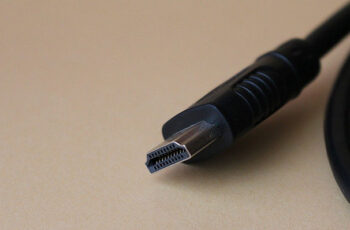HDMI STB vs DVI vs MHL vs ARC – What are the differences and which port to Use? Let’s Find Out!
Newer TVs generally come with various ports, making them versatile yet also confusing for new users. Chances are you already know the differences between HDMI, VGA, RCA, and AUX ports, but what about the different variants of HDMI?
The following informational guide contains extensive details on the different types of HDMI ports, as well as the DVI video interface.
Understanding the Common HDMI Versions
HDMI has basically replaced every one of the legacy AV interfaces. Apart from its omnipresence on TVs and monitors, it has a ubiquitous influence on a wide range of media devices, including Blu-ray players, game consoles, smart streaming set-top boxes, etc.
The newer TVs, even the affordable ones, come with at least a single HDMI 2.0 port, capable of delivering up to 4K (2160p w/HDR) output at a 60 Hz refresh rate.
HDMI 1.4 has a lower bandwidth, but it still can deliver a 4K output. Having said that, it comes at the cost of a lower refresh rate and inferior color space. On resolutions lower than Ultra HD, HDMI 1.4 is mostly the same as 2.0 in terms of video output capabilities.
The whole point of discussing the HDMI revisions is to help you understand the different labels next to your TV’s HDMI ports. Although TV manufacturers include at least four HDMI ports on every model for versatility, only one or two of them meet the HDMI 2.0 standards. In most cases, the rest of the ports are based on the HDMI 1.4 or older standards, which is a cost-saving measure for entry-level and mid-range TVs.
Fortunately, HDMI is an inter-compatible standard, meaning you can connect an HDMI 1.4 compliant media device to a TV over an HDMI 2.0 port or vice-versa without facing any issues. Furthermore, it supports multi-channel audio.
Most TV manufacturers label the HDMI ports by different functions and devices instead of using the HDMI revisions. ‘STB,’ ‘MHL,’ and ‘ARC’ are some of the most common examples. It makes it simpler for consumers to decide which port to use for the best video and audio quality when connecting a particular media device.
If you are still confused about the labels next to your TV’s HDMI ports, check out the next section below to learn more.
Everything you need to know about HDMI STB, MHL, & ARC

The concepts of STB, MHL, and ARC labels under your TV’s HDMI ports are relatively straightforward to understand. Here’s what you need to know about them:
HDMI STB
STB stands for “set-top box,” meaning that the designated HDMI port is more than enough for carrying video output from cable or satellite set-top boxes. An HDMI STB port can have an older standard (HDMI 1.4 or earlier), as most television channels are broadcasted in only 1080i (interlaced) resolution with stereo audio.
However, that doesn’t mean you can’t connect other devices to the HDMI STB port. As mentioned before, HDMI is an inter-compatible standard. If your TV’s user manual or specifications refer to the HDMI STB port being compatible with HDMI 2.0 devices, it means it can output up to 4K@60Hz without compromises.
In that case, you can plug in your game console, streaming box/stick, or Blu-Ray player to the port and get the most out of them.
Read – Can You Record On A Smart TV?
HDMI MHL
MHL or Mobile High-Definition Link is an HDMI standard that enables smartphones, tablets, and other mobile devices to be connected to the TV over existing mobile device connectors, such as Micro-USB and USB-C. It’s a decade-old standard developed in collaboration between Nokia, Samsung, Sony, Toshiba, and Silicon Image.
The HDMI MHL port on a TV allows users to take advantage of the feature. All you need is a Micro-USB/USB-C to HDMI MHL adapter to connect your phone or tablet to your television. Most Android devices support the following feature, so you don’t have to worry too much about compatibility.
The other HDMI ports on your TV probably support MHL as well. However, chances are the feature is intentionally limited to a single HDMI input on firmware-level for better compatibility. It explains why the manufacturers designate only a single HDMI port for MHL.
iPhone and iPad devices don’t support MHL. Despite that, you can use Apple’s proprietary Lightning Digital AV adapter (for iPhone and older iPad) and USB-C Digital AV Multiport Adapter (for newer iPad models with USB-C) to get up to 4K@60Hz video output over an HDMI 2.0 interface.
Check – Watch Movies From Phone to TV Without HDMI
HDMI ARC
ARC stands for Audio Return Channel, a widely adopted standard introduced in HDMI 1.4. The HDMI ARC port on your TV can transmit audio data streams from a different HDMI input source to external audio equipment.
For example, if you have a soundbar or home theater system plugged into your TV via HDMI ARC, it can playback audio from other media devices connected to your TV via the remaining HDMI ports. When you change the HDMI input source (e.g., from a game console to the cable box), ARC will automatically route the audio output from the selected source to the sound system.
Without ARC, you will have to use individual TOSLINK or coaxial audio cables to get audio output from your media device to your sound system.
eARC or Enhanced Audio Return Channel is something you will find on newer high-end TVs. It enables lossless multi-channel audio formats like Dolby Atmos and DTS:X. Other than the quality improvements, it’s identical to ARC in terms of functionality.
HDMI 2.1 (Must-read)
If your shiny new 4K TV comes with an HDMI 2.1 port, expect to get the most out of it in the upcoming years. In case you didn’t know, the next-gen PlayStation 5 and Xbox Series X/S game consoles can output 8K@60Hz and 4K@120Hz for high-fidelity content and select games. The same applies to the recently released NVIDIA (Ampere) and AMD (RDNA 2) graphics cards for PCs.
HDMI 2.1’s maximum bandwidth of 48 Gbit/s is what enables the following consoles and graphics cards to output such resolutions at higher refresh rates. It also includes native support for technologies like VRR (Variable Refresh Rate), DSC (Display Stream Compression), and AALM (Auto Low Latency Mode), which translates to drastic improvements for competitive gamers.
Furthermore, eARC works out of the box with HDMI 2.1, even if some of its features can be backported to HDMI 2.0 with firmware updates on select TVs.
Although it’s an off-topic subject, HDMI 2.1 is something you should be aware of just in case you want to get the best possible gaming experience out of your new game console. It’s worth mentioning that you will have to use an Ultra High-Speed HDMI cable to saturate the full bandwidth of HDMI 2.1.
What’s Different about DVI?
DVI is a separate digital display interface that’s quite similar to HDMI. It’s still around even after twenty years. Older TVs and monitors come with the DVI-D or DVI-I port, and so does last-gen graphics cards. The only major difference between DVI-D and DVI-I is the pin layout, which is important to know if you are shopping for a DVI cable.
Surprisingly, HDMI is backward-compatible with DVI, with exceptions to older DVI-A and dual-link DVI interface. Even if your TV doesn’t have a DVI port, you can use an asymmetric DVI to HDMI cable (or adapter) to get video output from a DVI source.
However, HDMI-specific features like ARC, CEC, and HDCP won’t work. Unlike HDMI, DVI doesn’t support the transmission of digital audio. The lack of HDCP (High-bandwidth Digital Content Protection) means DRM-protected content will refuse to output over a DVI to HDMI cable.
Examples include Blu-ray videos and movies/shows from streaming services like Netflix and Prime Video. The color space is also limited to RGB format on DVI.
HDMI STB vs MHL vs ARC vs DVI: Which Port to Use?
At this point, you probably have understood the concepts of HDMI and its different standards and protocols. The truth is, you can connect your media devices to any HDMI ports you want to get video output. Having said that, specific features like ARC or MHL will work only when you connect them to the labeled HDMI ports on the TV.
Just make sure to leave HDMI 2.0 or 2.1 ports for devices capable of outputting high-resolution video or graphics at higher refresh rates. Assign your cable set-top box or Blu-ray player to the ports rated for HDMI 1.4 or older standard, as they don’t saturate as much bandwidth as devices that support HDMI 2.0 or 2.1.
If you wish to connect your old computer or projector to your new TV, use a DVI to HDMI adapter or cable. In case your TV includes a DVI (DVI-I or DVI-D) port, you won’t need any special accessories but a regular DVI cable.
